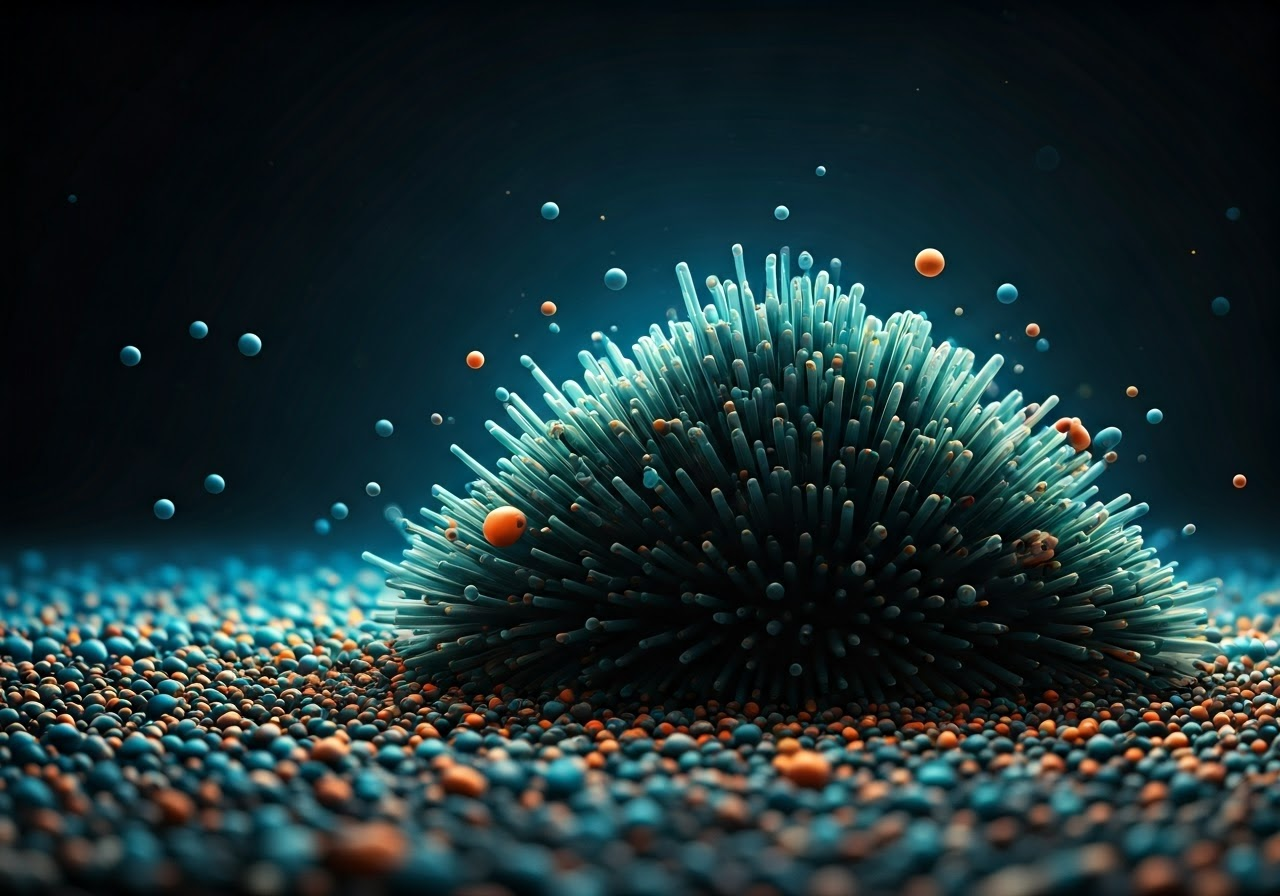
Microplastic particles are a global issue impacting ecosystems and human health. This blog explores their origins, risks, and the effects on people and the environment. Plastic pollution has evolved from visible garbage to invisible threats.
What Are Microplastics?
Microplastics are tiny bits of plastic particles found everywhere, including in our food and water, almost every product that is used, and in our clothing and in the air. Understanding their impact is crucial. Smaller than 5 millimeters, and most unable to be seen with the naked eye, microplastics vary in types and sources like microbeads from cosmetics or fibers from synthetic clothes.
Primary vs Secondary Microplastics
Understanding the difference between primary and secondary microplastics is crucial. Primary microplastics originate directly, often entering water bodies via wastewater due to their small size. On the other hand, secondary microplastics result from the breakdown of larger plastic pieces, contributing significantly to environmental pollution. By comprehending their origins and distinctions, we can develop improved strategies for managing and reducing plastic waste.
Primary microplastics are intentionally small plastic fragments, used in various products like personal care items and industrial abrasives. They enter the body directly. Secondary microplastics result from the breakdown of of items such as bottles and bags, due to environmental factors like sunlight and wear and tear.
Sources of Microplastics in Everyday Life
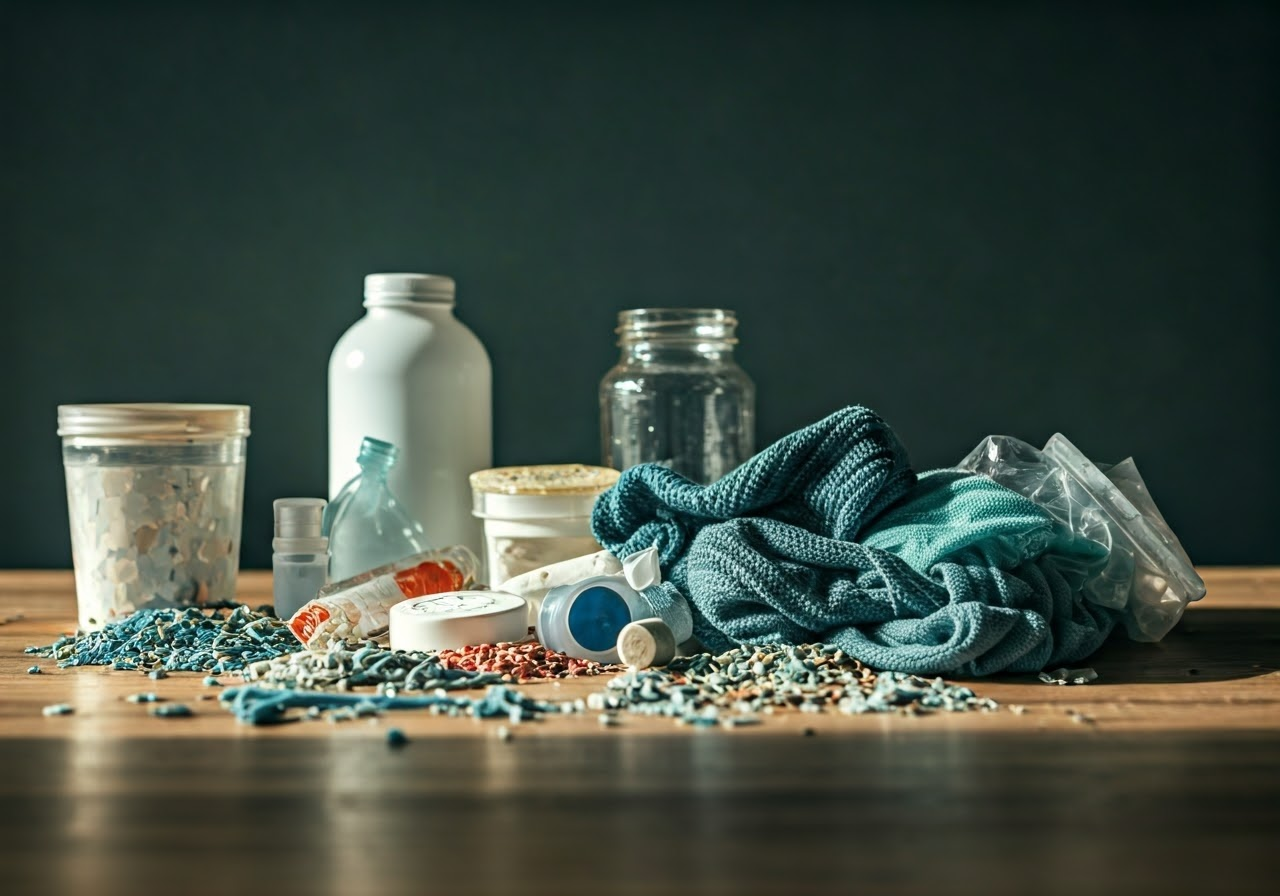
Microplastic pollution is everywhere, but where do we find it in our daily lives? They can be found in many unexpected places, from our homes to our workplaces. They are released without intention when we make, use, or throw away plastic items. Let’s examine some of the main sources in our daily routines.
Household Products and Packaging
Household products and their packaging contribute significantly to this type of pollution. Most plastic packaging is single-use, leading to rapid disposal in landfills or as litter, a primary source of microplastics. Items like plastic wrap, bags, and containers generate substantial plastic waste.
Moreover, plastic products like toys, furniture, car tires and artificial turf deteriorate over time, releasing microplastics continuously. This continuous shedding exacerbates the negative impact and overall environmental microplastic issue.
Cosmetics, Personal Care Products and Clothing
Personal care products, like exfoliating scrubs and toothpastes, often contain microbeads. These tiny plastic particles both absorb into the body and also wash away into the environment, as wastewater treatment plants struggle to filter them out effectively. While some countries have banned microbeads, they remain prevalent. Consumers should seek products with natural alternatives to avoid contributing to this issue.
Synthetic and dyed clothing, made from materials like polyester, nylon, and acrylic, shed with every wash and wear. A single load of laundry can release up to 700,000 microplastic fibers into wastewater, which often bypass filtration systems and enter oceans, rivers, and even drinking water. These microscopic particles have been found in human lungs, blood, and even placentas, raising serious health concerns. Studies suggest that they can cause oxidative stress, inflammation, and hormone disruption when they accumulate in the body. With an estimated 1.5 million tons of microplastics released into the environment each year from textiles alone, reducing synthetic clothing use and choosing natural fibers is a critical step in minimizing exposure.
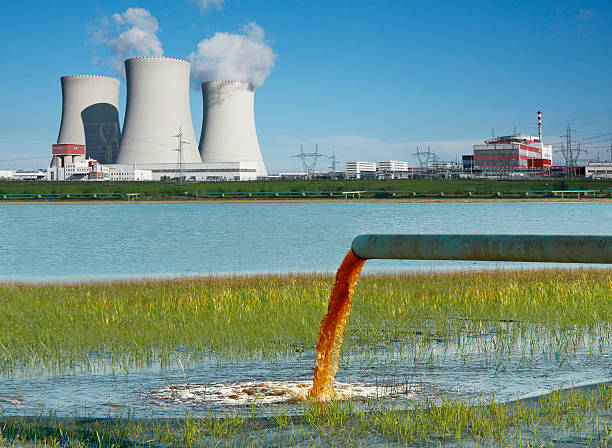
Industrial Processes and Runoff
Industrial processes significantly contribute to this type of pollution. Activities like plastic production release microplastics into the environment and Improper disposal leads to the accumulation of waste in landfills. Accidental spills of nurdles, small plastic pellets, during transport or production also add to the environmental impact.
Additionally, urban and industrial runoff transports microplastics. Rainwater carries them from various sources such as worn-out tires and paint chips from roads and industrial areas into bodies of water.
Ecological Effects of Microplastics
There are far-reaching ecological effects that extend beyond immediate pollution, impacting wildlife and entire ecosystems. Aquatic environments are particularly vulnerable, as microplastics can be ingested by marine organisms ranging from plankton to larger fish species. This ingestion can lead to physical harm, such as internal injuries or blockages, and may also result in the accumulation of toxic substances that adhere to the plastic particles. As they move through the food chain, they pose risks not only to individual species but also to the stability of ecosystems. Terrestrial organisms are not exempt either; soil bacteria and insects can ingest them through contaminated soil, potentially disrupting their habitats and populations. Additionally, the accumulation of microplastics in marine and freshwater environments degrade habitats, which can alter reproduction, feeding behaviors, and ultimately species survival. The full scope of these effects is still unfolding as research continues to uncover the long-term consequences of microplastic pollution on biodiversity and ecosystem health.
How Microplastics Enter the Environment
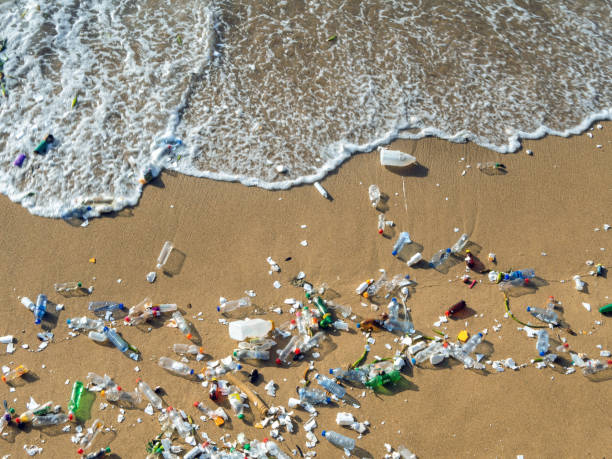
Atmospheric Deposition
Water bodies are not the only places where microplastics are found; the atmosphere also plays a significant role in their spread. Microplastics can be airborne due to various reasons such as plastic waste being blown around, ocean waves causing bubbles to burst, or clothes drying outside.
Once airborne, these tiny plastic particles can travel long distances, reaching remote areas like the poles and high-altitude regions. This explains why microplastics are present in pristine locations far from sources of plastic pollution.
Atmospheric deposition is a key pathway for microplastics to enter the food chain as they settle on land and water, potentially being ingested by animals. This interconnectedness highlights the extensive impact of plastic pollution across different environmental domains.
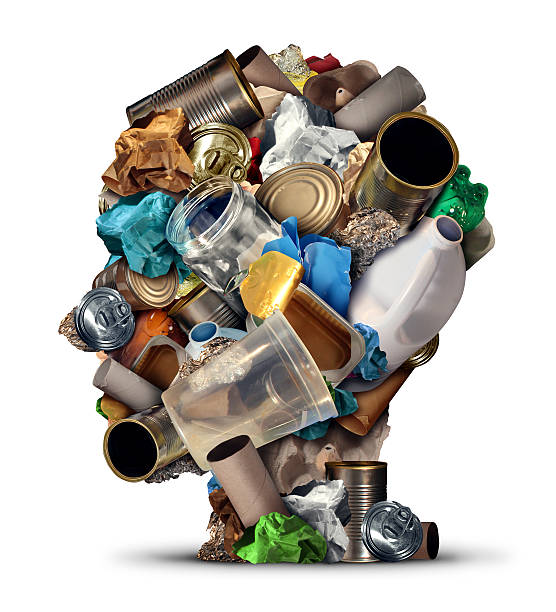
How do microplastics enter our food chain?
Microplastics enter our food chain through various pathways, including water sources, soil contamination, and the ingestion of contaminated marine life. As these tiny plastic particles break down, they are absorbed by organisms, gradually accumulating in larger species and ultimately reaching humans through consumption of seafood and contaminated crops.
What does this mean for our health?
The health impacts of microplastics are far-reaching. They pose a threat to our health as they can accumulate toxins and heavy metals and end up in our food chain and then in the human body. Studies suggest potential risks like hormone disruption, organ damage, and even cancer. Avoiding plastic use and opting for eco-friendly alternatives can help reduce exposure to microplastics.
Physical and Chemical Toxicity
Their small size helps them get past natural barriers in the body and may let them enter cells and tissues. This can cause inflammation and affect how cells work.
They can also carry toxic chemicals found in the environment. Many plastics have additives, like phthalates and bisphenol A (BPA). These substances can mess up hormones. They might leak from plastic, especially in heat or sunlight, which is bad for human health.
Research shows that they can cause oxidative stress in cells. Oxidative stress is linked to several health issues, like heart disease, cancer, and brain disorders. They can also create significant gastrointestinal tract disorders among other ailments.
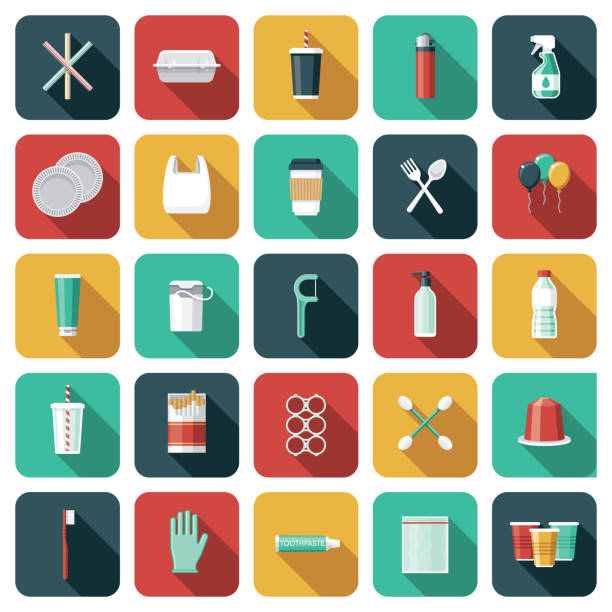
Single-Use Plastics
One of the best ways to lower microplastic pollution is to cut down on single-use plastics. These items are used for a short time but cause a lot of plastic waste. Luckily, there are many good and reusable options that can be used instead:
- Say no to plastic bags: Use reusable shopping bags made from cloth, canvas, or strong materials.
- Ditch single-use water bottles: Get a reusable water bottle and fill it up instead of buying bottled water.
- Carry your own cutlery and containers: Use your own reusable cutlery and food packaging instead of taking single-use ones.
- Choose products with minimal packaging: When you shop, pick products with little or no plastic packaging to cut down on waste.
Filtration and Water Treatment Innovations
Water treatment facilities play a key role in fighting microplastic pollution and helping protect public health. They handle large amounts of wastewater that contain these tiny particles. To better remove them, researchers are looking into advanced filtration methods.
One effective method is membrane filtration. This technique uses special membranes with very small holes to catch them. Another method is electrocoagulation. This process uses electrical currents to group them together, making it easier to take them out.
These new filtration and water treatment technologies aim to improve how we remove microplastics from wastewater. The goal is to stop them from entering the environment. As we continue to develop and use these technologies, they could greatly reduce microplastic pollution in our water bodies.
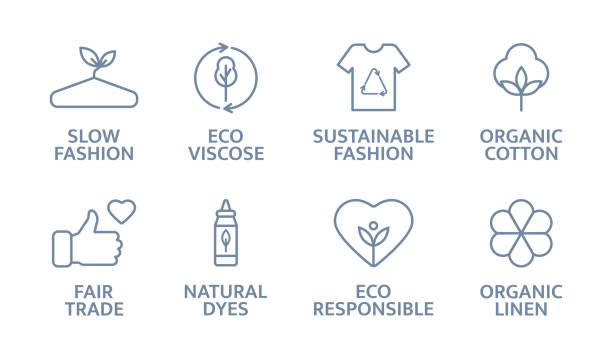
Organic and Sustainable Clothing
Choosing organic and natural fiber clothing, such as cotton, linen, wool, and hemp, is a healthier alternative to synthetic fabrics. Unlike polyester or nylon, these natural materials do not shed microplastics and biodegrade safely. Organic fabrics, especially those certified by organizations like GOTS (Global Organic Textile Standard), are grown without toxic pesticides or synthetic dyes, reducing skin irritation and chemical exposure. Additionally, studies show that natural fibers allow for better breathability and moisture absorption, enhancing comfort and overall well-being. By opting for sustainable, organic clothing, consumers can protect their health while also making an eco-friendly choice that reduces environmental harm.
Additional Reading
Persistent Organic Pollutants Carried by Synthetic Polymers in the Ocean Environment
Microplastics in Landfill Leachate: Occurrence, Health Concerns, and Removal Strategies
Future Scenarios of Global Plastic Waste Generation and Disposal
Litter per Liter – Study of 30 Lakes